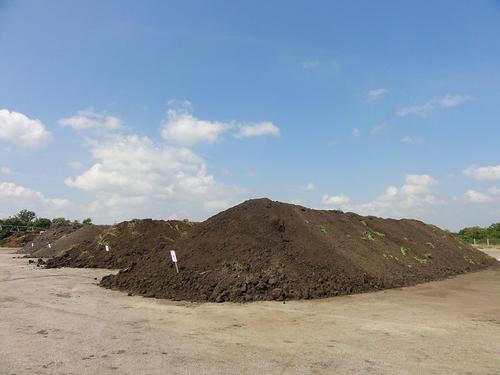Sludge reuse
Reuse of composted sludge as a soil conditioner in agriculture and horticulture returns carbon, nitrogen, phosphorus and elements essential for plant growth back to the soil. Less chemical fertilizers are required and the organic carbon helps to improve soil structure for soil aeration, water percolation and root growth. The nitrogen and phosphorus are also released gradually for plant uptake compared to the more soluble chemical fertilizers. The potential of leaching of nutrients to ground or surface water by rainfall run-off is highly reduced. Nevertheless, pathogens and heavy metals can limit the reuse of sludge.
Pathogens should be reduced to levels that do not pose health hazards to workers handling the sludge, potential health hazards from the spreading of helminth eggs and from horticultural produce contaminated by pathogens. Composting of the sludge to attain a temperature of 55 °C for two weeks followed by windrow maturation produces compost that meets these conditions. Stabilized sludge, which has been dewatered and dried on sand beds to attain a low moisture content, can meet the same conditions.
Heavy metals and toxic chemicals are difficult to remove from sludge. Preventing these chemicals from entering the wastewater or sludge should be the aim of wastewater management for sludge intended for reuse in agriculture or horticulture. Reuse may still be possible for purposes such as mine site rehabilitation, highway landscaping or for landfill cover. Sludge that has been conditioned for reuse is called bio solids.
Conversion of sludge, which is heavily contaminated by heavy metals or toxic chemicals, to oil is technically feasible (Enersludge process). The conversion is by a pyrolysis process, heating dried sludge to a high temperature in the absence of oxygen or with a controlled amount of oxygen. Capital and running costs of an oil from sludge process are high.
(UNEP 2000)

